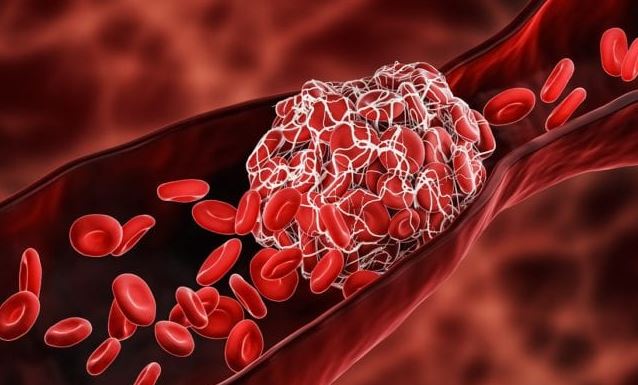16 Poisonous berries to avoid while foraging
09/08/2022 / By Zoey Sky

Foraging is a great way to find free food for your stockpile or when SHTF, but make sure you can properly identify different plants.
You also need to learn how to differentiate plant lookalikes, especially poisonous berries that can make you sick or even kill you. (h/t to SurvivalSullivan.com)
There are many types of berries in the wilderness. While many of them are edible, there are also a lot of poisonous berries that you need to avoid.
These poisonous fruits will have varying effects, ranging from mild discomfort to death. A lot of berries look eye-catching and delicious, but you should always confirm that they are edible before eating them.
Forage safely and learn about poisonous berries so you can avoid them and stay safe. (Related: Foraging 101: How to identify poisonous plants in the wild (and in your garden).)
American bittersweet (Celastrus scandens)
American bittersweet, colloquially called Jacobs Ladder, is found in most of North America and Canada.
American bittersweet is a vibrant and beautiful plant that produces berries that are safe for various wildlife but are highly toxic to humans. Every part of the plant is poisonous and can cause vomiting and diarrhea when consumed.
Bittersweet nightshade (Solanum dulcamara)
The bittersweet nightshade is native to Europe and Asia, but it has been naturalized in many parts of the world like North America. This creeping vine can reach up to four meters in height when a strong enough support system is in place.
Bittersweet nightshade contains toxic alkaloids like solanine, solasodine and beta-solamarine that make it very poisonous to humans.

Black nightshade (Solanum nigrum)
Black nightshade or blackberry nightshade is native to Eurasia but can also be found in the Americas, Australasia and South Africa.
There are many types of black nightshade, some of which are edible.
The berries produced by black nightshade are typically between six and eight millimeters in diameter and black or purple-black in color. It is sometimes mistaken for its deadlier relative, the aptly named deadly nightshade (Atropa belladonna).
Black nightshade contains solanine. High levels of the compound can be toxic, but fatalities are rare when consuming the berry.
Symptoms are delayed for six to 12 hours after ingestion but you may experience abdominal pain, diarrhea, drowsiness fever, sweating and vomiting. Eating large amounts of black nightshade berries can cause cardiac arrythmia and respiratory failure leading to death.
Canada moonseed (Menispermum canadense)
The Canada moonseed is found in the eastern part of North America and southern Canada. You can also find it in Florida and Texas. Canada moonseed berries look like grapes and the former are often mistaken for the latter.
The name “moonseed” comes from the shape of the berry’s seed, which is like a crescent moon. The berries ripen between September and October, just like wild grapes.
Canada moonseed contains an alkaloid called dauricine that can be fatal if eaten.
Common snowberries (Symphoricarpos albus)
The common snowberry belongs to the honeysuckle family and can be found in the Northern and Western U.S. and much of Canada.
Common snowberry is used for erosion control and was a popular ornamental plant from the 1890s to the 1920s.
The common snowberry is eaten by animals like bighorn sheep, grizzly bears and white-tailed deer. Certain livestock animals like cattle and sheep also eat the berries.
However, common snowberry fruit, the plant itself and the stems are poisonous to humans. Consuming them may cause vomiting.
Deadly nightshade (Atropa belladonna)
Deadly nightshade is native to Europe, North Africa and West Asia. It is considered one of the most toxic plants in the Eastern Hemisphere.
The maximum single dose for human consumption is 200 mg, but the consumption of two to five berries is enough to kill an adult human.
Belladonna poisoning symptoms include confusion, constipation, delirium, hallucinations, lack of balance, light sensitivity, rash, staggering and urinary retention.
Dogwood berries (Cornus)
Dogwood berries are small, red berries usually found between forests and fields in the eastern U.S. in fall and winter.
The berries are commonly eaten by birds. Although some are edible, you should avoid them just to be safe.
Holly berries (Ilex aquifolium)
There are 500 species of holly plants and they can be found all over the world in temperate climates. The European variant is commonly used for Christmas decorations and cards.
Holly contains a variety of substances like caffeic acid, caffeine, chlorogenic acid and theobromine. These substances make the berries toxic and cause diarrhea, nausea and vomiting, along with stomach and intestinal problems.
Horse nettle (Solanum carolinense)
Horse nettle is a member of the Solanum or nightshade family. Horse nettle fruits are green or yellow and look like cherry tomatoes.
Most parts of the plant like the fruits and leaves are poisonous. It contains solanine, a toxic alkaloid that can cause abdominal pain along with circulatory and respiratory problems.
Ivy berries (Hedera)
The Hedera or ivy family consists of 12 tp 15 species of plants native to Europe, Macronesia, Northwestern Africa and parts of Asia.
Ivy vines are common in South Africa and you find them climbing up the walls of buildings. Ivy berries are moderately toxic and cause contact dermatitis or a skin rash. It’s not life-threatening, but it can be very, very uncomfortable especially in a survival situation.
Juniper berries (Juniperus sabina)
There are different species of juniper plants and while there are a few that are edible, many of them are poisonous.
Juniperus sabina or the savin juniper contains savin oil that destroys the body’s cells and may cause fatalities.
All juniper plants contain thujone oil, which causes adverse symptoms like diarrhea, stomach pain and kidney damage.
Consuming the berries can also cause breathing difficulties, convulsions, skin rashes and vomiting.
Lily of the valley (Convallaria majalis)
Lily of the valley berries look like a cherry or a tomato. The plant is found in Asia, Europe and the southern Appalachian Mountains of the United States.
Lily of the valley grows between 15 and 30 centimeters in height and bears between five to 15 sweetly scented flowers.
Note that the red-orange berries on this plant are highly poisonous. Even small amounts of these berries can cause abdominal pain, confusion, a reduced heart rate and vomiting. Lily of the valley contains 38 different cardiac toxins that can cause cardiac arrest and death.
Mistletoe (Viscum album)
Mistletoe was native to Europe, but mistletoe plants can now be found in North Africa, Morocco, Portugal, Spain and parts of America such as California.
There are about 1,500 species of mistletoe plants and each one is different in terms of its toxicity to humans. Viscum album or the European mistletoe is more toxic than Phoradendron leucarpum, it’s American counterpart.
The American variant contains phoratoxin while the European variant contains tyramine. These toxins are concentrated in the leaves and berries of the plants.
Toxins from mistletoe plants can cause blurred vision, nausea and vomiting. In some rare cases, they can also cause hypertension, seizures and cardiac arrest.
Red baneberry (Actaea rubra)
There are two species of baneberry that are found in North America. Red baneberry or snakeberries are found throughout North America and Canada and are most often encountered by hikers.
Red baneberry blooms from May through June. The flowers die in the fall and form clusters of red, juicy-looking berries. The berries are bitter and eating them causes a burning sensation in the throat and mouth.
Common effects of consuming red baneberries include diarrhea, dizziness, headaches, stomach cramps and vomiting. Consuming six berries can cause cardiac arrest or respiratory distress.
Virginia creeper berries (Parthenocissus quinquefolia)
Virginia creeper berries are native to eastern and central North America, Mexico and Guatemala.
The Virginia creeper is grown as an ornamental plant and this vine usually climbs up a wall or surface. The vine can cover a surface and it has attractive fall foliage.
Virginia creeper berries are purple-black color and aren’t toxic to birds. However, they are highly toxic to humans.
The berries contain lethal amounts of oxalic acid which is linked to kidney damage and death in humans.
White baneberry (Actaea pachypoda)
White baneberry is native to eastern parts of North America. The plant prefers loamy soil and shady places.
Every part of this plant, especially the berries and roots, is poisonous to humans.
White baneberries contain cardiogenic toxins that can have an immediate sedative effect on the muscular tissue of the human heart. A toxic dose causes symptoms like diarrhea, dizziness, hallucinations, headaches, salivation and severe stomach pain or cramps. White baneberries may also cause death by cardiac arrest or a heart attack.
Forage carefully and learn how to identify edible plants and berries. When foraging in the wilderness, avoid poisonous berries like juniper berries and dogwood berries.
Watch the video below to know how to identify wild berries like blueberries and strawberries.
This video is from the Natural News channel on Brighteon.com.
More related stories:
Foraging 101: Best US states to forage for food after SHTF.
Prepper foraging tips: 6 Wild lettuce lookalikes to avoid.
5 Common edible plants for urban foraging (plus foraging tips).
Sources include:
Submit a correction >>
Tagged Under:
food freedom, food safety, food supply, foraging, green living, homesteading, nutrients, off grid, organics, preparedness, prepper, prepping, self sufficiency, survival, survivalist, tips
This article may contain statements that reflect the opinion of the author




















